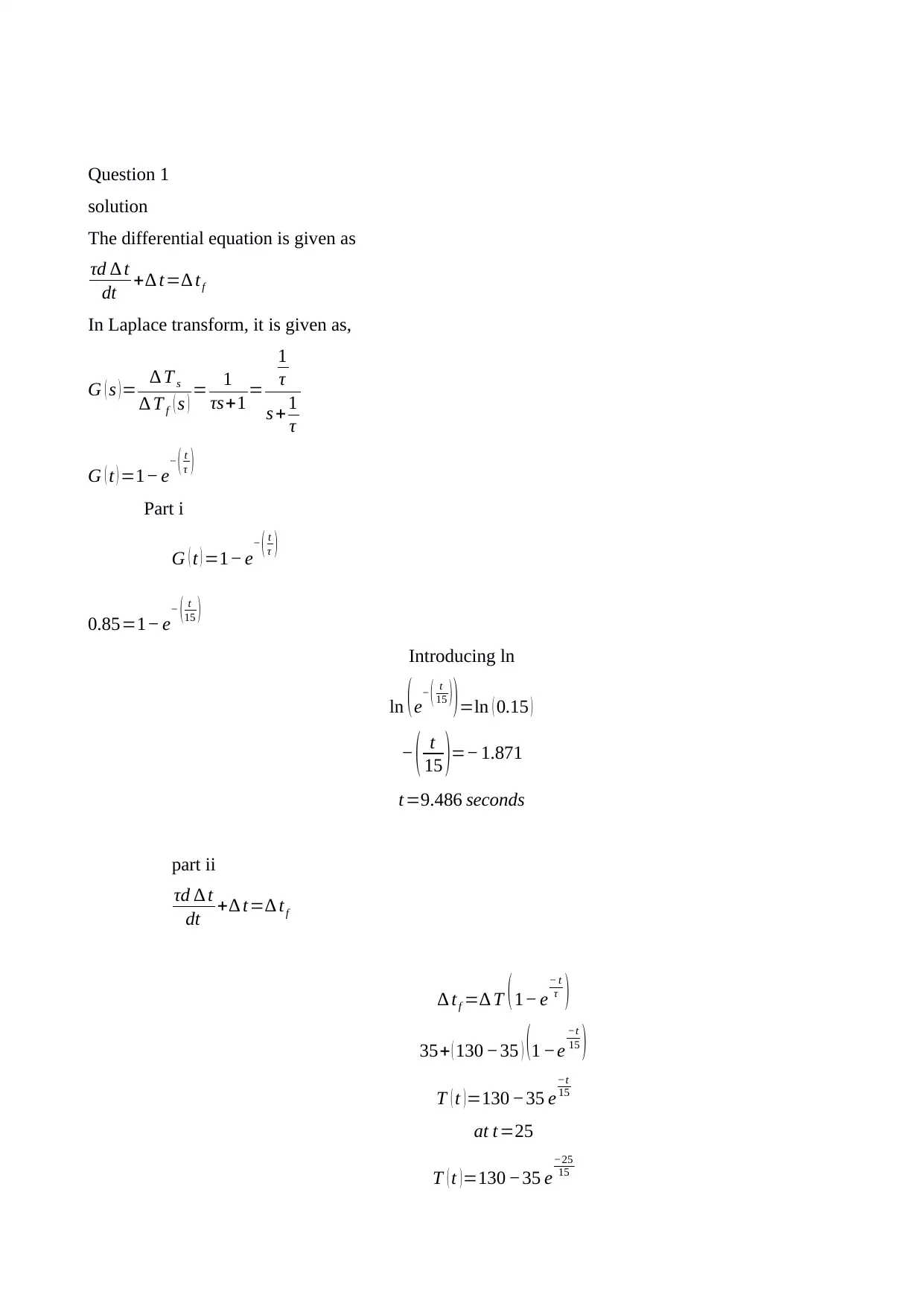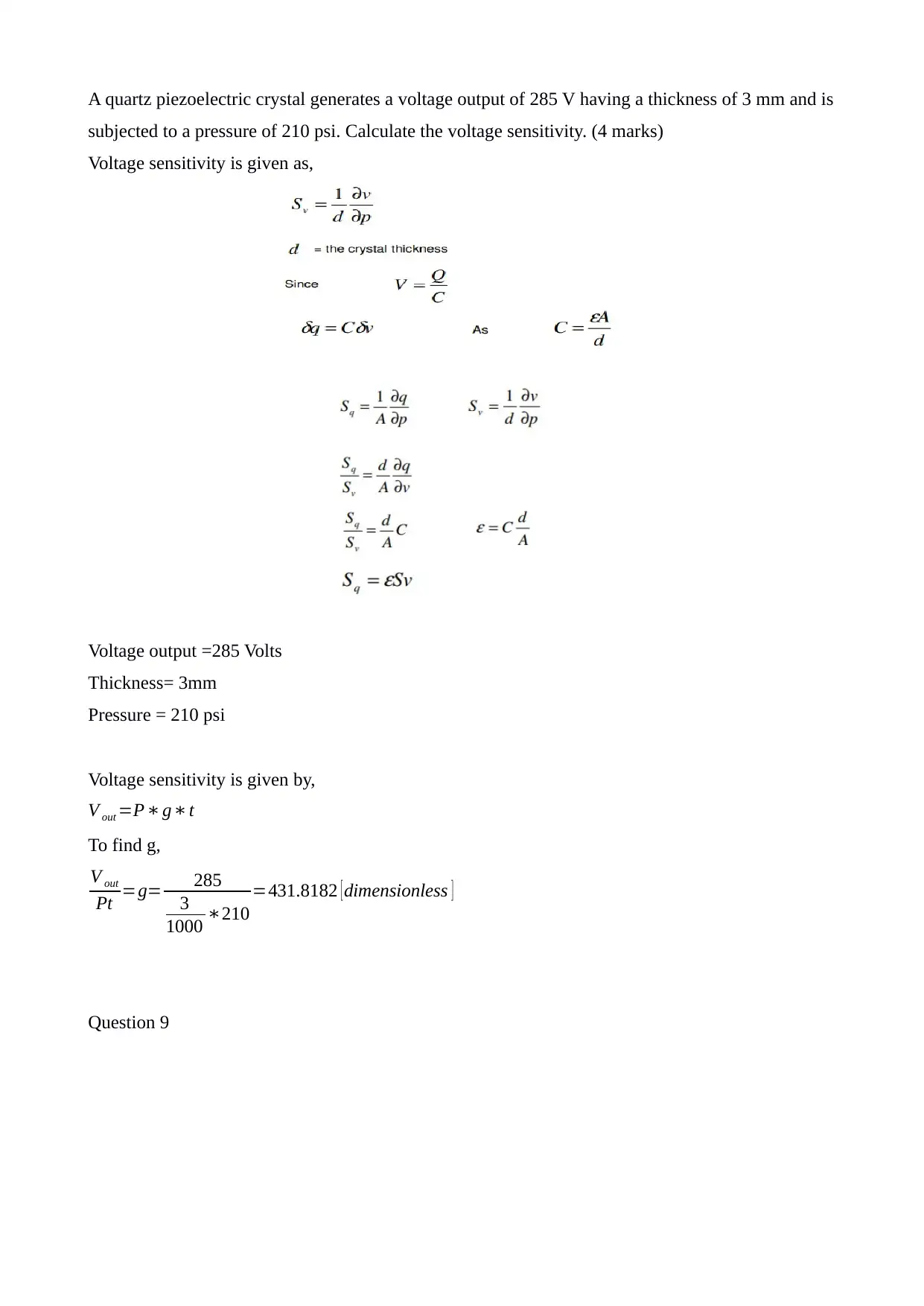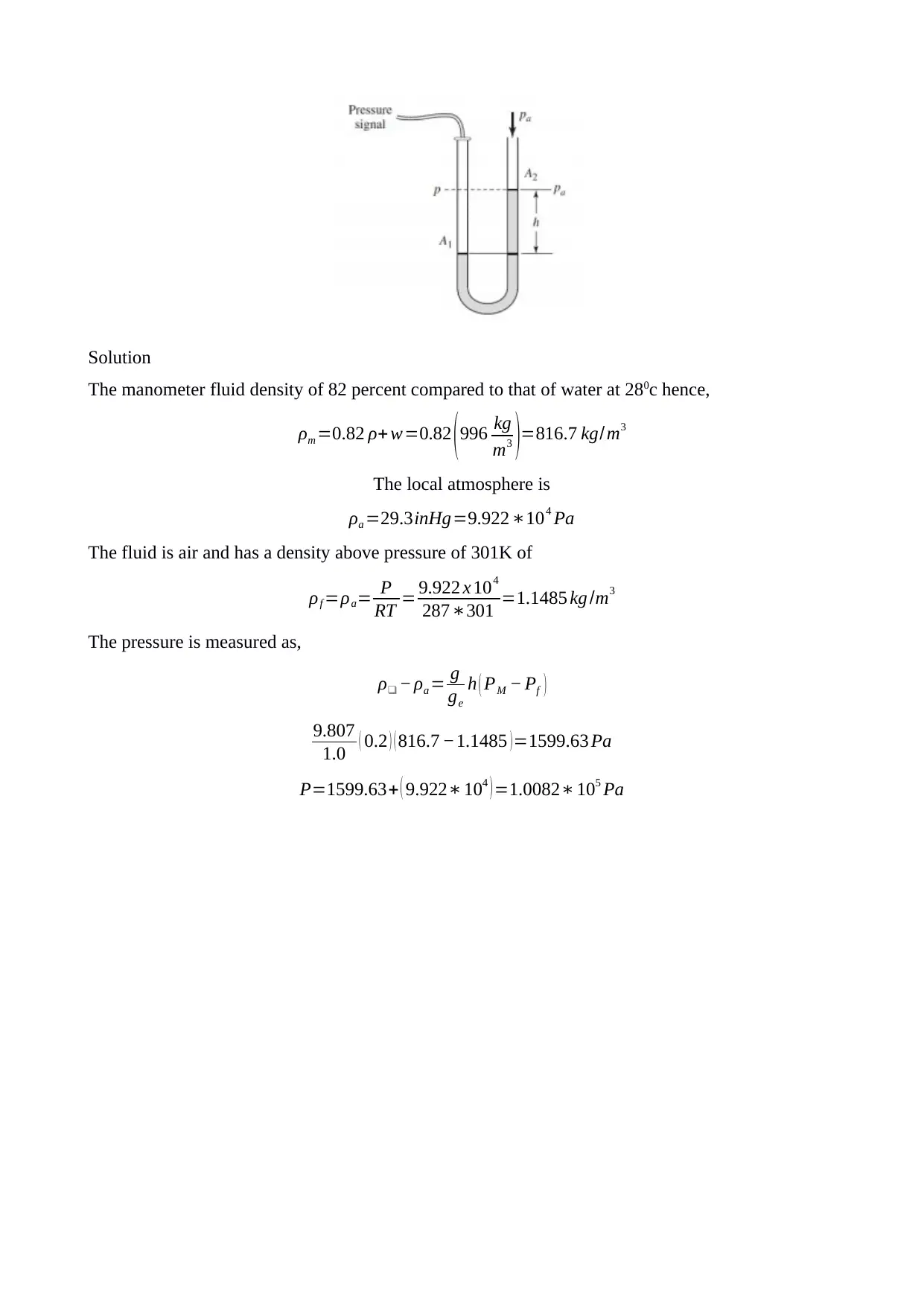ME504 Industrial Instrumentation Assignment Solution: Paper B
VerifiedAdded on 2023/06/07
|7
|737
|96
Homework Assignment
AI Summary
This document presents a solution to an Industrial Instrumentation assignment, covering topics such as differential equations, Laplace transforms, temperature sensors, radiation calculations, sensitivity analysis, and piezoelectric crystals. Specific problems addressed include determining time constants, temperature responses, incident radiation, and voltage sensitivity. The solutions involve applying relevant formulas and principles to calculate various parameters related to industrial instrumentation. Desklib offers a wide range of solved assignments and past papers to support students in their studies.
1 out of 7











![[object Object]](/_next/static/media/star-bottom.7253800d.svg)